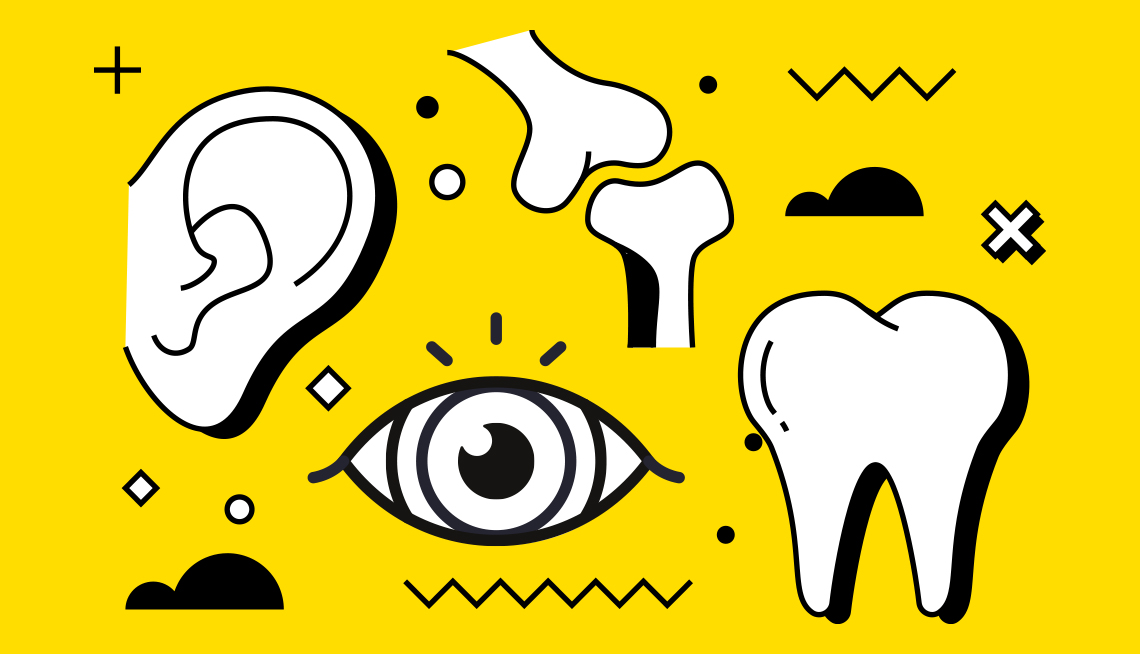
- Select a language for the TTS:
- UK English Female
- UK English Male
- US English Female
- US English Male
- Australian Female
- Australian Male
- Language selected: (auto detect) - EN
Play all audios:
Forty to 60 are the prime ages for plantar fasciitis, inflammation of the tissue band (fascia) that connects the heel bone to the toes. It typically comes from overstressing the fascia due
to the force of activity and hard surfaces. “Feet are designed for grass, dirt and sand,” Tritto says. “Everything that we walk on is hard, and it’s the hard stuff that causes problems.”
What to do: Wear supportive shoes — even around the house. “If you’re not supporting and protecting the foot, then you’re going to get arch problems, heel pain and Achilles tendinitis,”
Tritto says. Sidestep other foot ills by having your feet measured, he adds. Many people don’t realize that feet can get bigger with age and suffer from shoes that are too tight. 4. YOUR
PELVIC FLOOR You might think of the pelvic floor — the muscles that stretch from the pubic bone back to the tailbone at the bottom of the pelvis — as a female concern. But it’s just as
important to men. “The pelvic floor muscles hold up your bowel, your bladder and your uterus, if you’re a woman, and your prostate, if you’re a man, says Kandis B. Daroski, a physical
therapist specializing in pelvic health at Medbridge, a digital health company. One in 4 women experience pelvic floor disorders, often as a result of childbirth, though they may emerge long
after the kids have grown. Weakened pelvic muscles can lead to urinary or fecal incontinence, pain and prolapse, when organs drop down and even protrude outside the vaginal canal. Men can
also experience incontinence, particularly after prostate cancer treatment. Strengthening your body’s core is also vital. “Abdominal muscles, hip muscles and spinal muscles connect to and
support the pelvic floor, and vice versa, allowing it to work at its best,” says Daroski. 5. YOUR HIPS AND KNEES These familiar joints are among your body’s most vulnerable. “Knees and hips
are weight-bearing joints,” says Neil J. Cobelli, M.D., chair of orthopedic surgery at Montefiore Medical Center in the Bronx. “They’re subjected to a lot more stress than, say, your
shoulder or elbow. And having a knee or a hip that’s causing you pain diminishes every aspect of your life.” Unfortunately hip and knee pain are common after 50 and often lead to surgery.
“It’s a result of everybody living a longer and more active life,” Cobelli says. “Active people who play a lot of sports are prone to knee injuries and those injuries can result in premature
arthritis.” Other factors like obesity can also play a role. “Carrying extra weight seems to predispose our joints to wearing out, not just because there’s more stress on the joint, but
having a lot of fatty tissue on your body predisposes you to inflammation, and that inflammation seems to attack hip and knees,” he says. Arthritis of these joints also runs in families.
Shedding excess pounds and exercising are good ways to minimize joint pain. “If your joint is already giving you trouble, keep moving,” Cobelli says. “But you may need to alter what you’ve
been doing. If you’ve been a runner for 20 years and now your knee is bothering you when you run, don’t run so much. Find something else or change your routines — do it every other day, go
shorter distances, do it in intervals. But listen to the joint.” Arthroscopic surgery to trim or reconstruct damaged cartilage and remove fragments of bone or cartilage may offer relief from
knee pain or alleviate symptoms of problems that damage the cartilage and the soft tissues around the hip joint. “It gives people many more years of active life,” Cobelli says. Many
people will eventually need joint replacement in their later years. Fortunately surgery is increasingly common — and safe — and often can be done at surgical centers, allowing you to go home
the same day.





